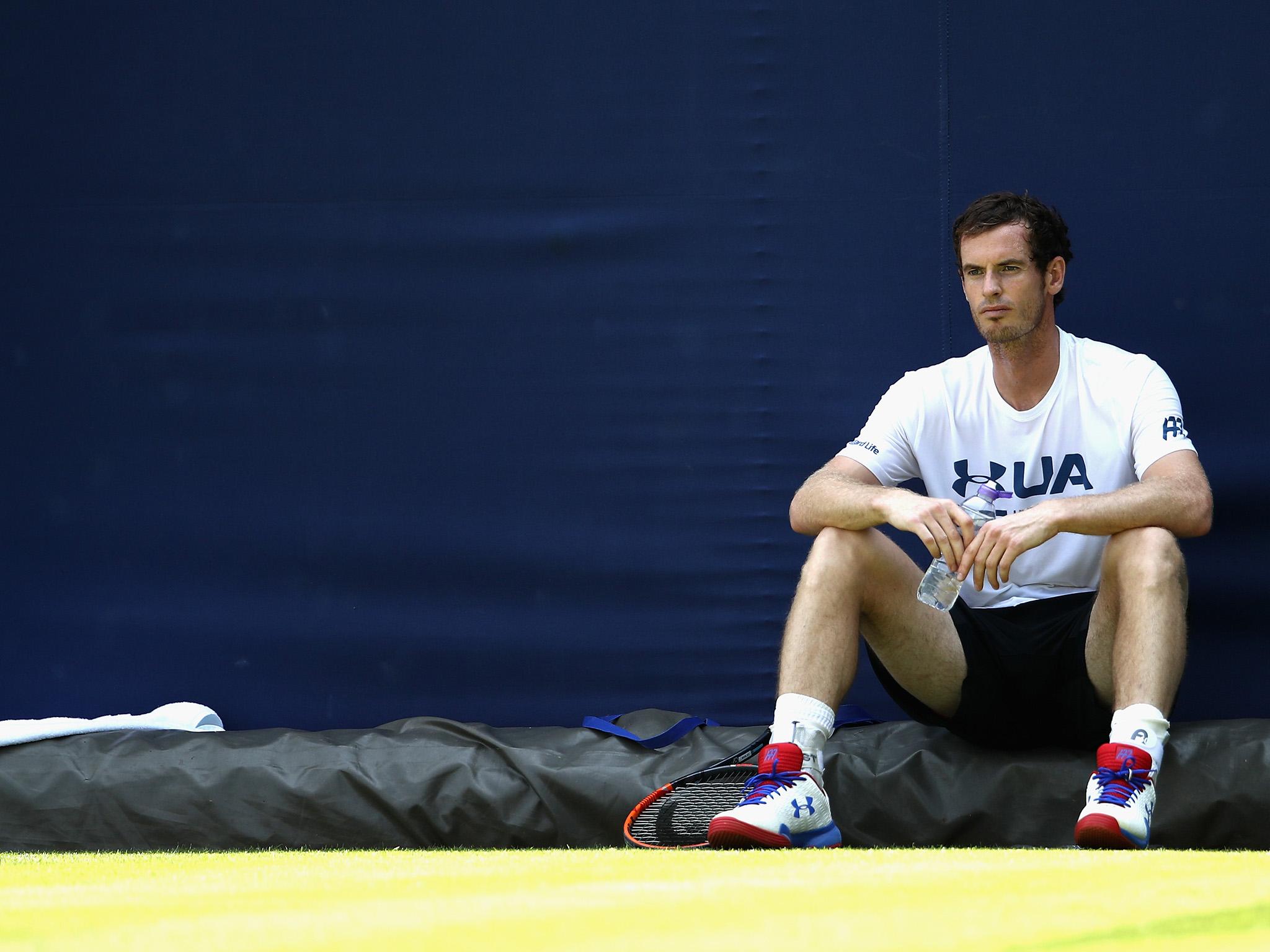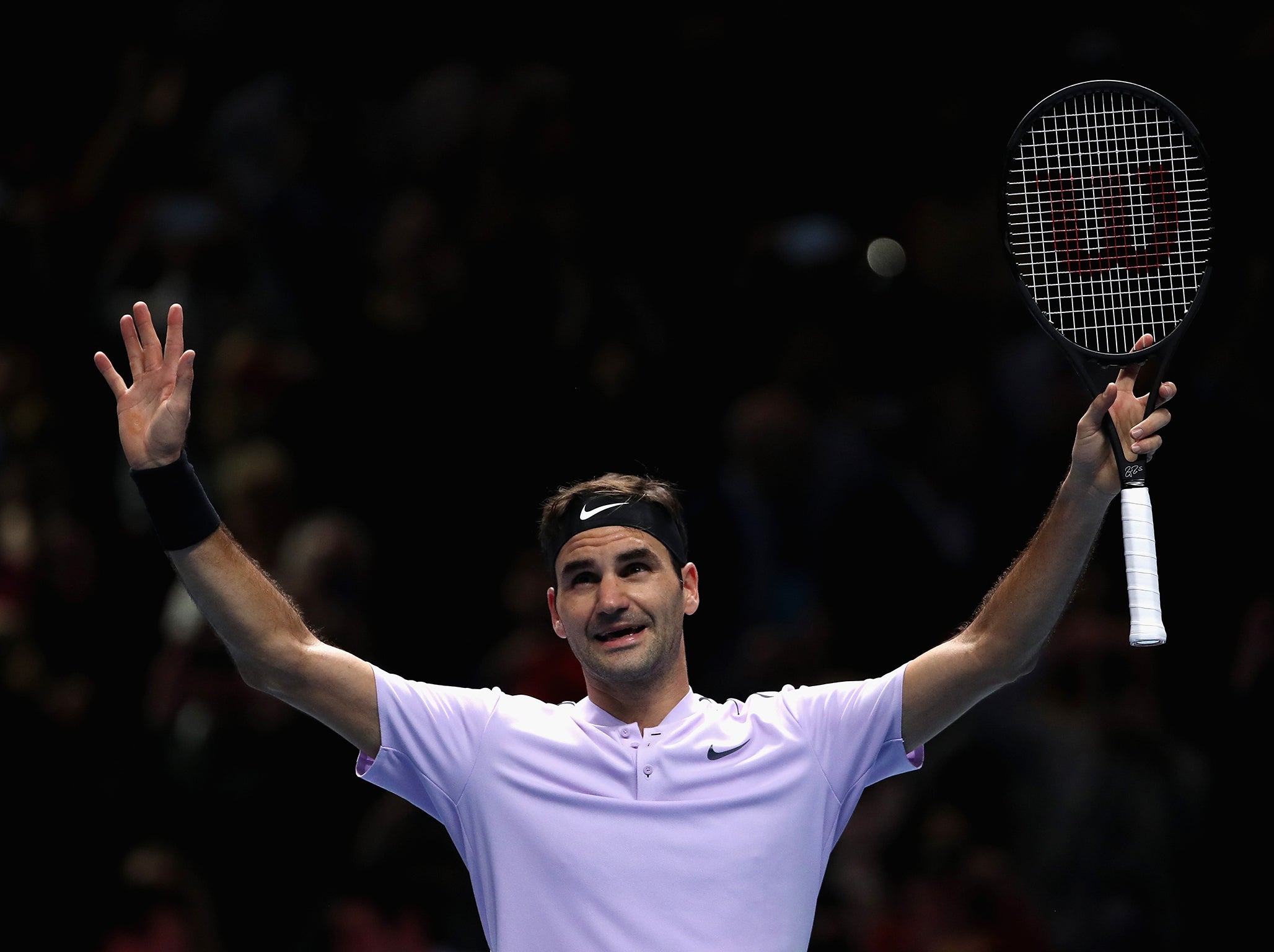Andy Murray would do well to follow Roger Federer's example on the road to recovery
Federer is a man who knows a thing or two about bouncing back from injury. The Swiss' own experiences could highlight what Murray needs to do to return to his best

Your support helps us to tell the story
From reproductive rights to climate change to Big Tech, The Independent is on the ground when the story is developing. Whether it's investigating the financials of Elon Musk's pro-Trump PAC or producing our latest documentary, 'The A Word', which shines a light on the American women fighting for reproductive rights, we know how important it is to parse out the facts from the messaging.
At such a critical moment in US history, we need reporters on the ground. Your donation allows us to keep sending journalists to speak to both sides of the story.
The Independent is trusted by Americans across the entire political spectrum. And unlike many other quality news outlets, we choose not to lock Americans out of our reporting and analysis with paywalls. We believe quality journalism should be available to everyone, paid for by those who can afford it.
Your support makes all the difference.Having put himself through physical pain for the last six months in his ultimately unsuccessful attempt to recover full fitness, Andy Murray has subjected himself this week to what must feel like emotional torture. As if missing next week’s Australian Open was not distressing enough, the former world No 1 is now recovering here in the very city that stages the year’s opening Grand Slam event following surgery on his right hip.
Murray, who might have to wait another 10 days before he can fly home, is unlikely to drop in on his friends and rivals at Melbourne Park, but whenever he turns on the television here he is likely to see some all-too-familiar faces and places. Today he could have watched Novak Djokovic trouncing Dominic Thiem down the road at Kooyong in his first match since Wimbledon, Tomas Berdych beating Rafael Nadal in the final of the Tie Break Tens exhibition event in Margaret Court Arena, or action from tournaments in Sydney, Hobart and Auckland.
At least Murray has not been the only player waging his fitness battles. Djokovic and Stan Wawrinka, who have been out of competition as long as the Scot, might yet join him on the absentees’ list next week: the Serb is still assessing his elbow problem while the Swiss cast doubt on his own prospects of returning after knee surgery when he pulled out of the Tie Break Tens tournament as a “precaution”. Nadal, meanwhile, has not played any competitive matches yet this year because of his knee problems, while Kei Nishikori has already chosen not to risk his wrist here.
In the women’s game Serena Williams has decided that returning to competition four months after giving birth is too early, Johanna Konta has been recovering from a hip problem and Garbine Muguruza withdrew from a tournament for the second week in a row when she pulled out of this week’s Sydney International with a thigh injury.
Planning a schedule that gives you the best chance of success in the most important tournaments has therefore never been a greater priority for many of the game’s leading players. It will no doubt occupy much of Murray’s thinking in the weeks and months ahead as he works towards his intended return in this summer’s grass-court season.
Murray has already decided that he will no longer put himself through the sort of schedule that saw him play 87 matches in 2016, the last of which saw him secure the year-end world No 1 ranking for the first time. Murray played 17 tournaments that year, as well as the Hopman Cup exhibition event and two Davis Cup ties.
“I’m certainly not going to be putting in the same amount of tournaments and effort to try to get to No 1 in the world,” Murray said as he looked ahead to his return. “I’ll certainly be more considered in the amount of tournaments I play, even though I play a conservative schedule anyway in comparison to most of the players on the tour. I’ll be focusing more on trying to win major events and big tournaments rather than trying to achieve certain ranking goals.”
Roger Federer’s extraordinary success last year proved what can be achieved on a limited schedule – even if being the greatest player of all time clearly helped. Having taken off the last six months of 2016 to recover from knee trouble, Federer played just 12 tournaments in 2017. He won seven of them, including the Australian Open and Wimbledon, and even ran Nadal close in the race for the year-end No 1 ranking.
Assuming that Murray returns to at least somewhere close to full fitness, might the Scot eventually consider a similar schedule to Federer’s? The key to the 36-year-old’s success was skipping the entire clay-court campaign in order to focus on preparing for Wimbledon and the north American hard-court season.

Even though Murray has enjoyed some success on clay, the surface has always been the most challenging for him, particularly from a physical point of view. Not only is it harder for any player to win points on clay than on any other surface, but Murray also found that it aggravated the back problem for which he eventually had surgery upon in 2013.
If missing the whole clay-court season might seem like too radical a move, it would be equally hard to see Murray committing next year to anything more than the Masters events in Madrid and Rome, plus the French Open.
There are other periods of the season when Murray might also consider cutting back on his commitments. In February he has usually played either indoors in Rotterdam or outdoors in Dubai, but in future he might prefer not to compete anywhere between the Australian Open and the “Sunshine Double” of Indian Wells and Miami in March. Considering his frequent struggles in California, might he even drop Indian Wells from his schedule?
The Aegon Championships at Queen’s Club and Wimbledon are likely to remain permanent fixtures in Murray’s calendar, but one of the back-to-back Masters Series tournaments in Canada and Cincinnati in August might be sacrificed in the build-up to the US Open. Thereafter, the big questions could be how much Murray wants to commit to both the Asia swing and the European autumn indoor circuit.

Until now the main reason why all the top players have generally competed in all eight of the year’s mandatory Masters Series tournaments (Indian Wells, Miami, Madrid, Rome, Canada, Cincinnati, Shanghai and Paris) has been the world ranking system, which is based on points earned at 18 different tournaments. If you miss one of the mandatory events, you cannot replace it with points earned from another tournament.
Those rules are relaxed for the older and more experienced players, but the fact that Murray could therefore juggle his tournament commitments in order to help with his ranking points tally is unlikely to figure in his thinking. The days when his position in the world rankings was a significant factor for him are now surely in the past. As long as his ranking is high enough to earn a seeding at the bigger tournaments, that should be enough.
Until the end of this summer’s French Open Murray should remain in the world’s top 50, though he will fall from his current position at No 19. With Wimbledon entries closing before the end of Roland Garros, he will have no trouble gaining direct entry into the field at the All England Club, though he is likely to be ranked outside the world’s top 150 by the time the grass-court season starts.

Thereafter, if necessary, Murray would be able to use a “protected” world ranking – reflecting his position before he got injured – to gain direct entry to tournaments such as the US Open. By the end of the year, nevertheless, he will surely be hoping that his ranking will be high enough not only to get him into the 2019 Australian Open but also, perhaps, to earn a place among the seeds.
That, however, is a long way off. For now, just playing again at the highest level will be an achievement in itself.
Join our commenting forum
Join thought-provoking conversations, follow other Independent readers and see their replies
Comments